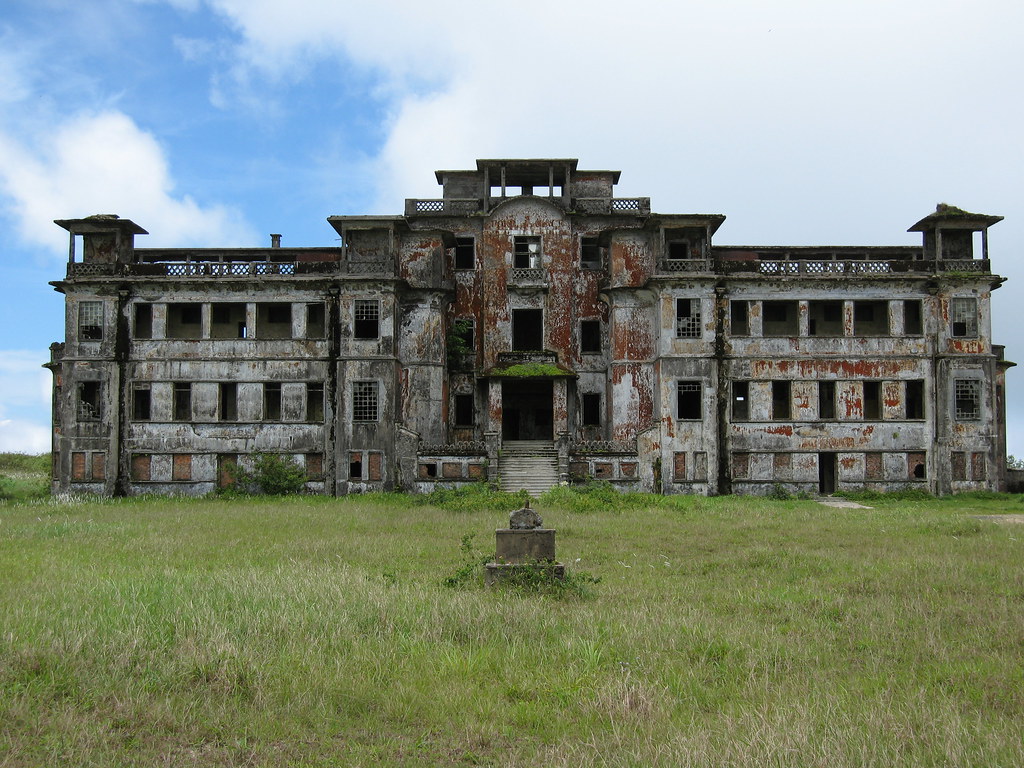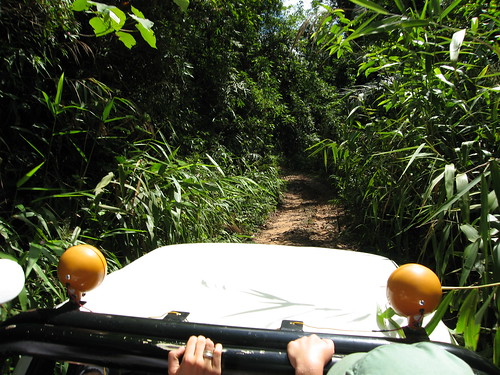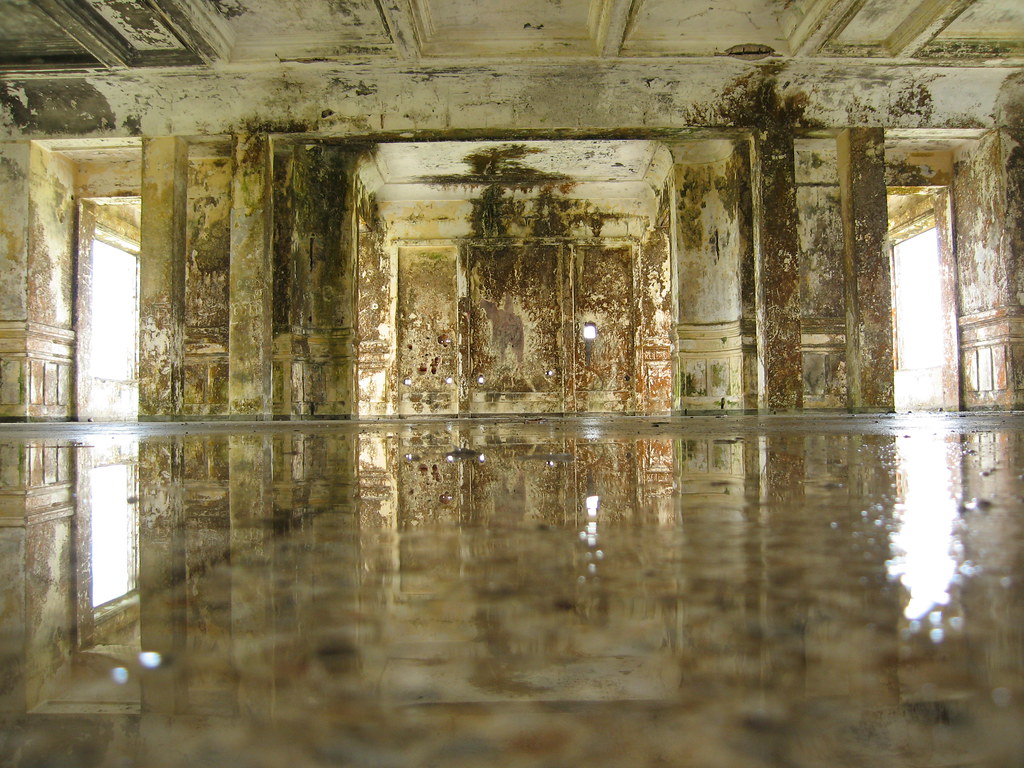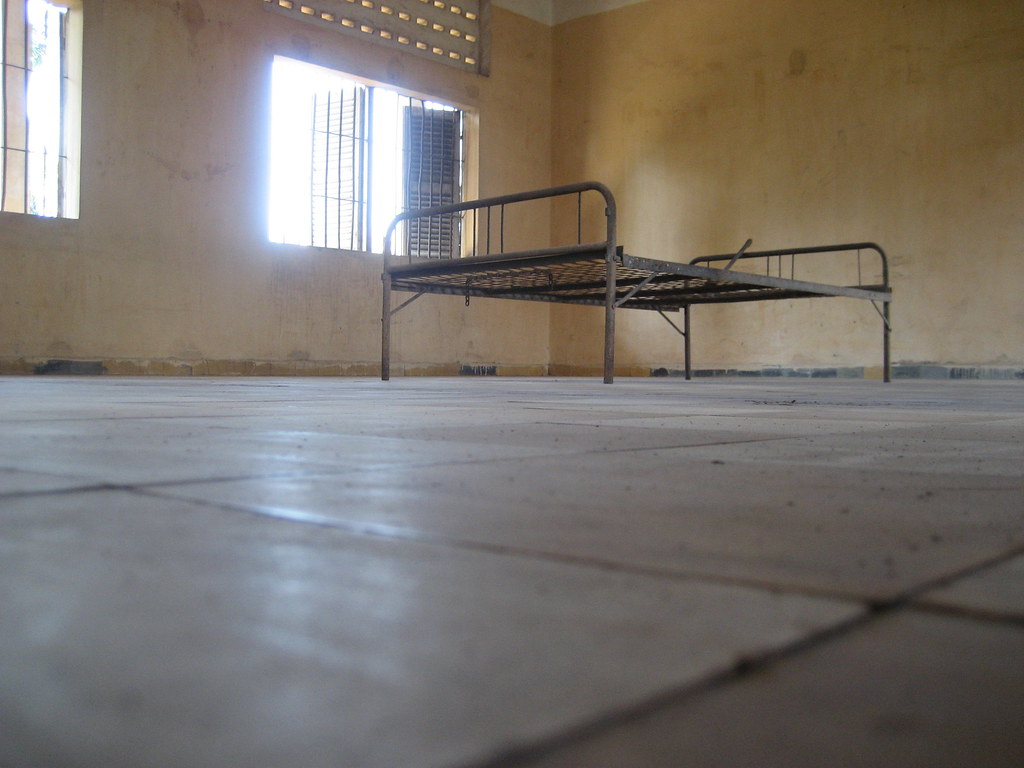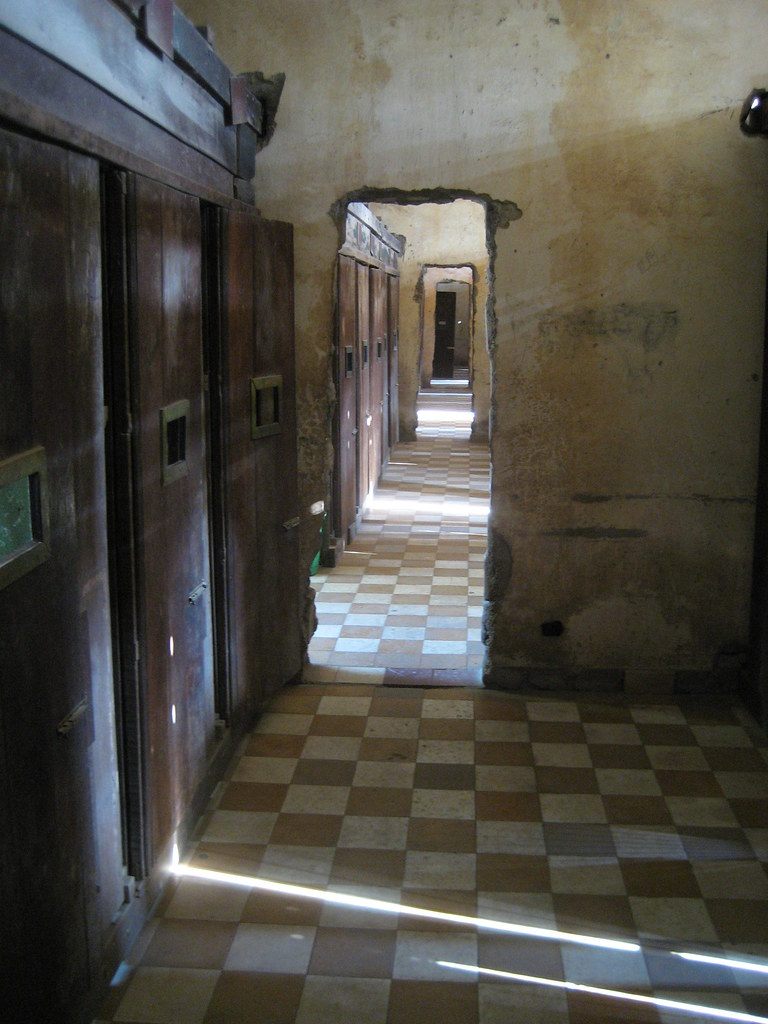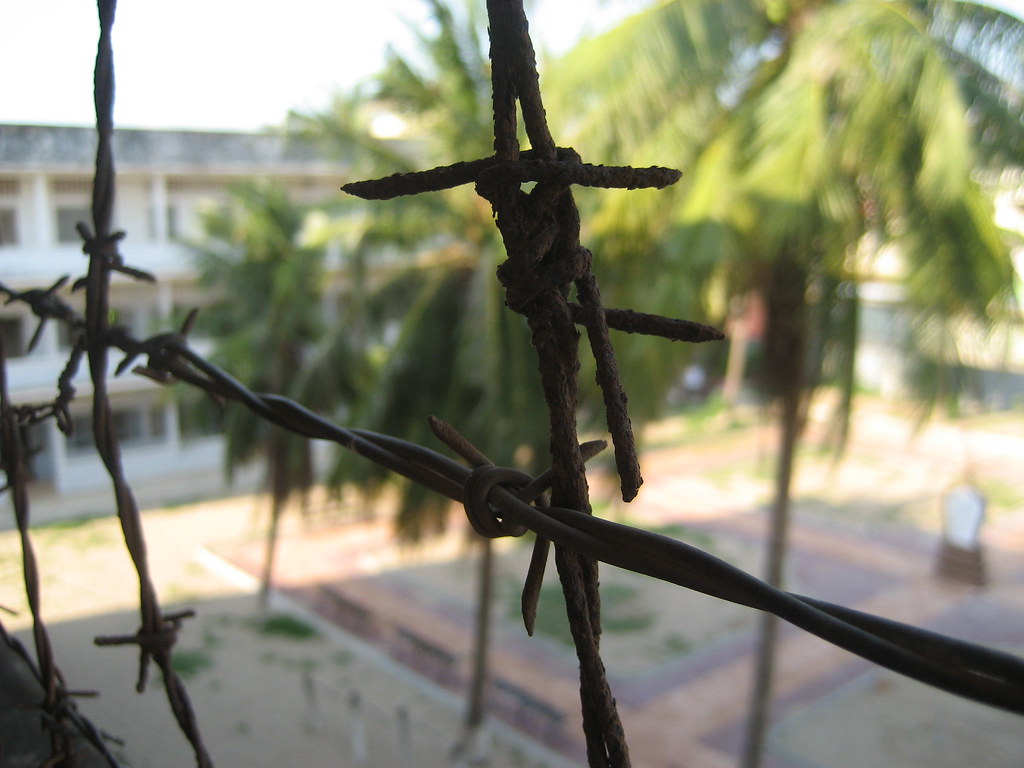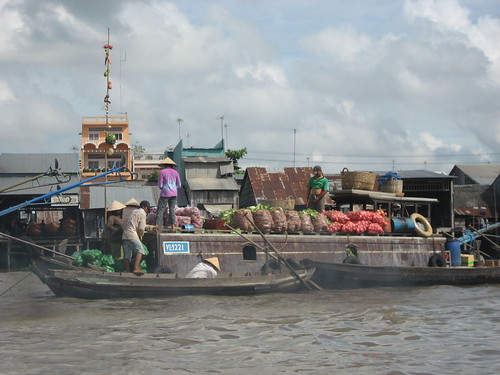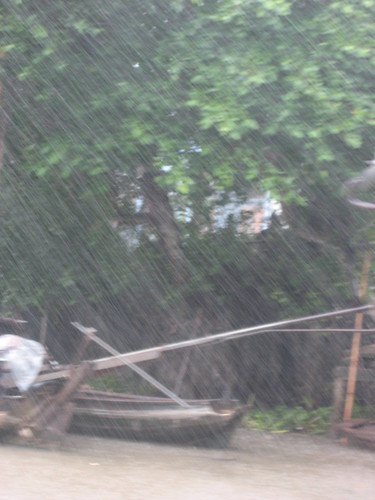Le Boker Palace
From Phonm Penh we took off South to the river side town of Kampot. Famous for Pepper in bygone Colonial days and for its proximity to the old beach side seafood town of Kep (as well as being a Khmer Rouge stronghold). Today its a sleepy town with plenty of colonial buildings making wandering around enjoyable and a smattering of ex-pat run riverside eateries. We used it as a base to venture to the fantastic old hill station in Boker National Park.
Abandoned by the French in 1922 and originally built as a spectacular (and much cooler than the lowlands) hilltop Hotel and Casino complex complete with shops, post office, Church and Royal apartments, today the station is a ghost town. Only a new ranger station has any manned presence.
At 3000ft above the surrounding coast, the climb up to the top is an adventure unto itself. The single lane road which once was tarmaced, has now been destroyed by the weather and overgrown by the jungle. Remember this is a jungle that hides tigers and elephants !. The 32km's of winding rubble is all the more enjoyable from the back of a pick-up. Every corner brings a duck, a weave or a hold on tight, as we bump over another small canyon. Two full hours after entering the gate, we arrive at the top. Battered and bruised the journey has been for something.
Ironically due to the vertical drop from the top to the sea below, rising hot air normally creates so much mist you can't see your nose, but the day we chose was perfect. Clear blue sky, mist rolling up onto the plateau and a view that ranks with the best we have seen out over Phu Quoc island and the coast below.
The buildings themselves are in varied states of collapse. The Church and the Casino Hotel are in the best condition for exploring. The Casino - known in its heyday as Le Boker Palace can be explored from top to bottom. From the kitchens, through the grand ballroom to the suites and outdoor dining areas above, while although small by current comparison you can switch your minds eye to see grandeur all around. The mist and empty halls make for an eerie atmosphere, it is said this is a haunted place. The King even went so far as to build a new casino 100m away as he thought the gamblers who took the shortcut down to the sea after losing too much cursed the original casino.
Even in the day with a made road the journey up here would have been tough in the vehicles of the time. Guests would have stayed here for a week at a time, enjoying the coolness, view and facilities.
The view from the top is phenomenal. 180 degrees of almost sheer drop to the sea coast 3000ft below.
After the great fun at the top, a reality check, another 2 hour bone-crunching ride to the bottom makes this a long, tiring but extraordinarily interesting and enjoyable expedition.
From Kampot we caught a share taxi around to Sihanoukville the evolving tourist friendly coastal town. Plenty of guesthouses and BBQ's on the sand make this a pleasant place to hang out for a few days. After our fill of barbied barracuda and local Angkor we braved a back to back bus journey from here , through Phnom Penh through to Siem Reap....a place deserving of its own blog...due to some old temples around there. Stay Tuned.
Read Full Post...
Abandoned by the French in 1922 and originally built as a spectacular (and much cooler than the lowlands) hilltop Hotel and Casino complex complete with shops, post office, Church and Royal apartments, today the station is a ghost town. Only a new ranger station has any manned presence.
At 3000ft above the surrounding coast, the climb up to the top is an adventure unto itself. The single lane road which once was tarmaced, has now been destroyed by the weather and overgrown by the jungle. Remember this is a jungle that hides tigers and elephants !. The 32km's of winding rubble is all the more enjoyable from the back of a pick-up. Every corner brings a duck, a weave or a hold on tight, as we bump over another small canyon. Two full hours after entering the gate, we arrive at the top. Battered and bruised the journey has been for something.
Ironically due to the vertical drop from the top to the sea below, rising hot air normally creates so much mist you can't see your nose, but the day we chose was perfect. Clear blue sky, mist rolling up onto the plateau and a view that ranks with the best we have seen out over Phu Quoc island and the coast below.
The buildings themselves are in varied states of collapse. The Church and the Casino Hotel are in the best condition for exploring. The Casino - known in its heyday as Le Boker Palace can be explored from top to bottom. From the kitchens, through the grand ballroom to the suites and outdoor dining areas above, while although small by current comparison you can switch your minds eye to see grandeur all around. The mist and empty halls make for an eerie atmosphere, it is said this is a haunted place. The King even went so far as to build a new casino 100m away as he thought the gamblers who took the shortcut down to the sea after losing too much cursed the original casino.
Even in the day with a made road the journey up here would have been tough in the vehicles of the time. Guests would have stayed here for a week at a time, enjoying the coolness, view and facilities.
The view from the top is phenomenal. 180 degrees of almost sheer drop to the sea coast 3000ft below.
After the great fun at the top, a reality check, another 2 hour bone-crunching ride to the bottom makes this a long, tiring but extraordinarily interesting and enjoyable expedition.
From Kampot we caught a share taxi around to Sihanoukville the evolving tourist friendly coastal town. Plenty of guesthouses and BBQ's on the sand make this a pleasant place to hang out for a few days. After our fill of barbied barracuda and local Angkor we braved a back to back bus journey from here , through Phnom Penh through to Siem Reap....a place deserving of its own blog...due to some old temples around there. Stay Tuned.


